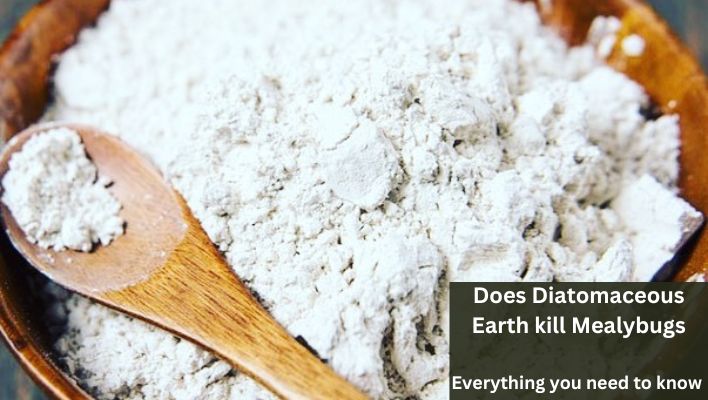We’ve all been there. You see a brown circle of stuff on the corner of your plant, only to discover that your plants have been infested with mealybugs. How do you get rid f these pesky pests? Or do diatomaceous earth kills mealybugs because of its amazing properties?
Diatomaceous Earth is a naturally occurring mineral that contains microscopic razor-sharp crystals. This is a magical substance, as it will kill just most pests you can think of. For example, mealybugs, whiteflies, bacteria, viruses, and fungi. It will also kill roaches, termites, and ants so that it can be used indoors and outside.
Diatomaceous Earth (DE) kills Mealybugs by dehydrating them, a reaction that results in the death of the mealybug within 24 hours. Shaving their exoskeletons with DE will significantly slow down the reproduction cycle.
Mealybugs are a pain to get rid of, especially if they’re infesting your home. They’re often very difficult to get rid of, and it can be hard to tell if you’ve got the right treatment. However, Diatomaceous Earth has some great properties, but does it make it a good pesticide, and is it safe for plants? Here I take you through the different uses for Diatomaceous Earth in regard to getting rid of nasty bugs.
What is diatomaceous earth?
Diatomaceous earth, or DE, is a naturally occurring sedimentary rock made up of the fossil remains of single-celled algae called diatoms. The sedimentary rock was formed millions of years ago by silica’s slow settling, which gives diatomaceous earth its crystalline structure. It has a chalky, siliceous appearance.
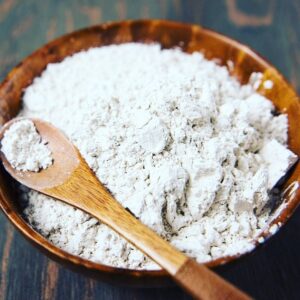
The word “diatom” refers to the silica-rich skeletons of these single-celled algae. This sedimentary rock is used for various purposes, including filtration and removing parasites from livestock and other animals. It’s also used in gardening as an excellent natural pesticide for your home garden.
Diatomaceous earth has been used as a pesticide since the early 1900s, and it can be used to kill fleas, lice, ticks, aphids, whiteflies, mealybugs, and many more. It’s also used in swimming pools because it absorbs toxins from the water and kills off bacteria that cause algae growth.
It’s often used as an insecticide because it kills insects on contact. However, DE can also be used for other purposes, like dusting furniture or cleaning grout—because it kills bacteria and fungi that might harm humans or pets.
It can also be used as a soil amendment to kill pests and help keep plants healthy, or it can be used as an abrasive to remove hard or sticky things from your body, like dirt and skin scales.
DE also has other uses, such as soil conditioner and fertilizer, because it has a large surface area for taking up nutrients from the soil. In addition to being used as an insecticide and weed killer, DE can be incorporated into other products like toothpaste or varnish.
How diatomaceous earth kills mealybugs
Diatomaceous earth, or DE, kills mealybugs by drying them out. It’s a porous silica-based compound that absorbs water from its surroundings. When you apply it to your plants, the mealybug gets stuck to the surface of it and dies.
It works by breaking down the exoskeleton of insects, leaving only the soft, wax-like inside exposed to water. The water will then dissolve this soft material and kill the insect.
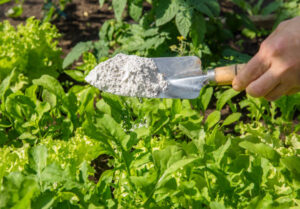
When we use diatomaceous earth as an insecticide, it dehydrates the insects’ bodies by drawing out moisture from inside them (this process is called osmosis). This causes their muscles to become weak and eventually stop working altogether. When this happens, the insects will die quickly and painlessly.
When DE comes into contact with moisture and an insect’s skin, it releases microscopic sharp edges that cut through the outer layers of the insect’s exoskeleton. This causes the insect to dehydrate and die.
The key here is that DE doesn’t just kill bugs—it also kills other organisms that try to eat them. So, while it may feel like you’re doing your part to help the planet by getting rid of those pesky mealybugs, you’re helping keep your house cleaner by keeping all sorts of bad bugs at bay.
How to use diatomaceous earth to kill mealybug
Diatomaceous earth has a strong ability to absorb moisture, which makes it an ideal ingredient for killing mealybugs because they love water and moisture. There are many ways to use diatomaceous earth to kill mealybugs.
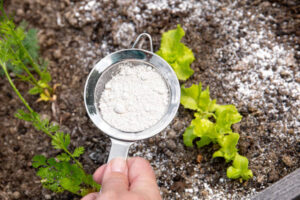
- You can use diatomaceous earth on plants by sprinkling it directly on affected areas or by misting the area with fine particles. You should not apply more than one pound per square foot area of diatomaceous earth once per week; this will prevent any damage to your plant(s). If you apply too much diatomaceous earth at once, you may have to wait until it naturally dissipates before using more again.
- Add the diatomaceous earth to your insecticidal soap or other pesticides in a spray bottle. Insecticidal soap is effective at killing mealybugs; adding diatomaceous earth will give you superb insecticide for killing most types of pests and making your garden healthy.
- Mix one teaspoon of diatomaceous earth with one cup of water and pour it into a spray bottle for application on plants or inside containers where insects might be hiding out.
- Place a cotton ball soaked in diatomaceous earth at the base of the plants or in the corners of rooms where you have seen mealybugs along walls and ceilings.
How to use diatomaceous earth in potted plants
For potted plants, diatomaceous earth has a few applications. First, the element increases the soil’s water retention by binding it with clay. This helps your plant get through dry periods without succumbing to its thirst.
In addition, diatomaceous earth can be used as a natural pest repellent. It works by coating plant leaves with tiny micro-particles that act as irritants for insects (and other pests), making them stay away from your plants.
To use diatomaceous earth in your potted plants:
Method 1: Add diatomaceous earth to a bowl of water and soak the plant roots for 24 hours or overnight. Leave the soil dry before applying again if you want to repeat this step.
Method 2: Before you water your plant in the morning, gently pour some diatomaceous earth into the potting soil around the base of each plant—you don’t need much because it will settle into the soil.
Method 3: After watering (or even after), you can mix some more diatomaceous earth into the top few inches of soil around each plant’s container so that any critters will die from dehydration and suffocation before reaching their target.
Can I mix diatomaceous earth with soil?
Yes, you can mix diatomaceous earth with soil. They contain silica and calcium, which help them bind to soil particles and form a hard, porous layer that resists erosion.
Adding diatomaceous earth to the soil will help break down organic matter. This helps improve the overall health of your plants and garden by providing unavailable nutrients.
Diatomaceous earth being added directly to your soil will help it retain moisture more effectively than normal soil. It also makes it easier for roots to penetrate deeper into the ground, which can help plants grow stronger roots and better access nutrients in their environment.
This means that your soil will have a more even texture and retain nutrients better than ever. You can also add it to your compost pile or garden to kill off pests like slugs, snails, ants, whiteflies, and spiders that might harm your plants.
It is also usable in indoor gardens to control insects like ants and roaches that might come into contact with plants through cracks in walls or windowsills. You can also sprinkle it on vegetables before planting them outside to keep them from being eaten by slugs or other bugs.
Soil is a mixture of sand, silt, and clay minerals, all compounds that can be broken down by diatomaceous earth. So if you use diatomaceous earth on your lawn or garden, it will work just as well on the soil where your plants are growing.
Other homemade mealybug sprays
Homemade mealybug spray is an easy and effective way to kill mealybugs on plants. And this can be done using various household items lying around.
Use Dish Soap
You can make homemade mealybug spray by combining one part water with five parts dish soap. That’s it! Just apply the mixture to your plants and let it sit for an hour or two before watering again. If you notice any new spots of mealybug activity after spraying with this concoction, then you know it worked.
Alternatively, combining the items below can make an effective insecticide for mealybugs and other pests.
Ingredients:
- 1 cup apple cider vinegar
- One quartz of water
- 1/2 teaspoon baking soda
Mix all ingredients in a spray bottle. Spray the mealybugs on your plants, leaves, and stems. Let it sit for at least 30 minutes before washing it off.
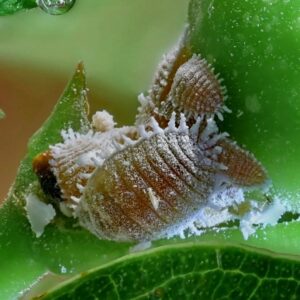
How long to leave diatomaceous earth on plants
DE is generally sold as a fine powder, which can be added directly to your plants’ soil or sprinkled on the leaves.
To treat pests, sprinkle about 1/2 cup of DE over the surface of your plant’s soil according to the label directions. If you’re using DE as a foliar application, sprinkle 1 teaspoon per square foot across the top of each plant’s leaves.
After applying diatomaceous earth, let it sit for at least 24 hours before watering or fertilizing it with organic products that aren’t made from synthetic materials (such as fertilizers). You can also use this time to apply other pest control methods, for example, insecticidal soap or neem oil spray.
It’s best to leave diatomaceous earth on your plants for at least 24 hours before reapplying or using other pest control methods, but not more than two weeks. This will allow the product to be absorbed by the roots of your plants and help them grow strong and healthy.
After two weeks, the diatomaceous earth might start to lose its effectiveness, and you may have to repeat the process.
Suppose you do not want to wait that long. In that case, you can try using a diluted solution of diatomaceous earth and water (1:2). In this case, we recommend waiting approximately 24 hours before removing the solution from the plant.
However, if you want to speed up the process, you can also apply it directly to the leaves of your plants and leave it there for 1-2 weeks.
Diatomaceous earth will kill beneficial insects
The sharp edges of diatomaceous earth cut through insect exoskeletons, causing them to die from dehydration after exposure. Some species of harmful insects may be resistant to this effect, but other species won’t be able to survive exposure to it.
The side effect of using diatomaceous earth is that it can also kill some beneficial insects such as ladybugs, lacewings, and bees. These insects are often used in gardens to keep pests at bay and protect plants from diseases caused by viruses and bacteria that spread through contact with these pests’ saliva or feces.
It does not affect humans or animals when ingested in small amounts. However, when insects ingest large amounts can cause some health problems such as cough, shortness of breath, and many more. Ingestion of even a very small amount of diatomaceous earth can cause gastrointestinal issues similar to those caused by ingesting glass shards.
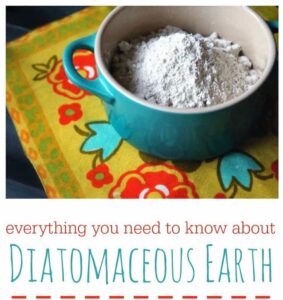
Will diatomaceous earth affect plants?
Diatomaceous earth is a safe, natural substance made by removing the hard outer shell of diatoms. It’s used for various purposes, from dusting furniture and floors to removing insects from plants.
If you’re using diatomaceous earth on your plants, it won’t harm them. However, if you’re using it to treat plant roots or soil, be sure to do so in a way that’s safe for the environment.
Diatomaceous earth does not affect plants. It is made of the remains of ancient sea creatures, and it has been used as a natural insecticide for thousands of years.
When used correctly, diatomaceous earth is completely non-toxic. The key is only to use it where you have seen other insects feeding on your plants, such as in the top layer of soil, and never spray directly onto them or into their root zones.
Other use of diatomaceous earth
Diatomaceous earth is mainly used as a pesticide but can also be used for many other things in the garden.
For example, it’s a good abrasive to use on tools that need sharpening, and it’s also good for cleaning up around your home. Diatomaceous earth can be used to clean up areas where dirt has been tracked in outside (like around your patio), and it can also be spread underneath plants to keep them from getting mildew during the winter months.
- Diatomaceous earth is also a good soil conditioner and fertilizer. It can be used to keep your soil from becoming too acidic by adding it to your garden’s top layer of soil.
- Diatomaceous earth can be mixed with fish emulsion and water to make an organic pest control spray for your garden. This is especially useful if you’re growing herbs and other plants susceptible to insect damage.
- For dusting plants, especially roses and orchids
- To get rid of snails and slugs.
- As a potting soil additive
- To de-fog aquarium filters
- Diatomaceous earth can also be used as mulch, which is great for keeping weeds at bay and adding nutrients to the soil.
